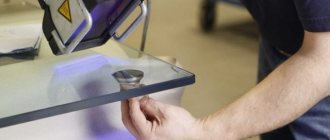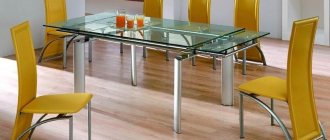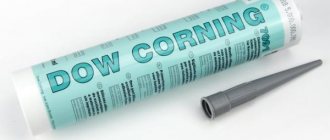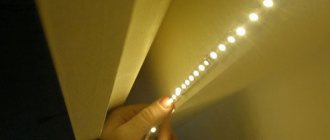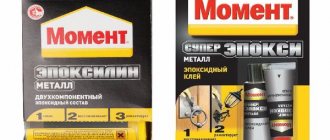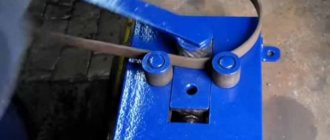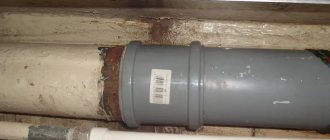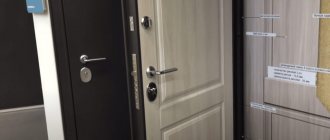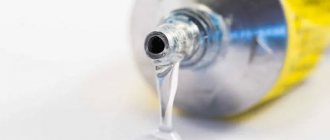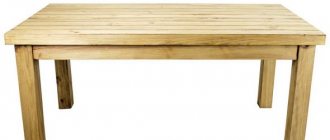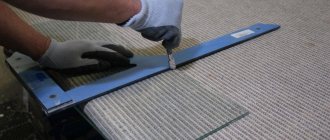Glass over a kitchen countertop creates a sleek, elegant surface that shines beautifully in the light. Particularly recommended for kitchens that flow into the living room, as it combines perfectly with a variety of materials. An additional effect can be achieved by illuminating the discreet glass above the kitchen counter with halogen or LEDs. Glass on the wall can be transparent, milky, matte or glossy, which provides great design possibilities. However, it must be remembered that ordinary glass (float type) is not perfectly transparent and has a slight greenish tint. This should be taken into account when designing kitchen furniture.
Glass above the countertop in the kitchen: fashionable wall decoration
Please note that there may be visible fasteners on the glass. This will be the case when we choose spot installation of glass above the tabletop with screws covered with metal covers and installation at a distance, i.e. at a distance of several centimeters from the wall (this will allow, for example, to place a strip with LEDs behind it, which will beautifully illuminate entire panel). Such additional fastening elements can be a decoration, a complement to the entire arrangement, but if we think that they spoil the intended effect, it is better to choose a more discreet installation method. You can glue the glass to the wall using clear glue or attach it to slats (this is only possible if we have access to the wall above the tabletop on at least one side). Regardless of the mounting method, do not forget to carefully close the space between the glass and the wall so that dust does not accumulate there in the future. Silicone or flexible gaskets are best suited for this. Typically, glass with a thickness of 4–6 mm is chosen for the wall above the tabletop, and the size is ordered individually from the glazier. However, regular float glass will not work everywhere.
For hobs where the wall above the worktop is exposed to moisture and high temperatures, it is recommended to use more tempered glass, i.e. safety glass. If you decide to use this type of glass, be sure to cut holes in it in advance, for example for electrical outlets, because once it hardens it will not be possible. Tempered glass is much more expensive than regular glass. The glass above the tabletop is perfectly smooth, making it easy to keep clean. However, you need to take into account the fact that you will see every drop of water on it.
Methods for attaching glass tabletops
Methods of attaching a glass tabletop to a forged table
In modern forged tables, the vast majority of cases use tabletops made of transparent glass. Precisely from transparent or, in extreme cases, with a slight tint! Heavily tinted glass can also be used, but in expensive table models only transparent glass must be used. This is done so that you can admire the beauty of forged metal through the tabletop. After all, an expensive forged table, in addition to legs, in its design also has many different decorative metal parts and elements that must be visible through the tabletop. These details and elements add beauty to the entire table, so there is no way to hide them behind tinted glass.
What options for attaching a glass tabletop to a frame base are currently used. The most widespread are 2 methods: 1) using so-called “Velcro” 2) using special nuts and bolts
Attaching the table top to the table base using Velcro
This is the simplest and most common option for attaching a tabletop to metal. Rubber suction cups are used as Velcro, which are inserted into special holes in the metal. The color of the suction cups is white or transparent. Colored suction cups are not used. A glass tabletop is placed on top of them, which under its weight is quite firmly fixed with Velcro. And the greater the weight of the glass, the stronger the connection.
Different manufacturers of forged tables have different suction cup sizes. So at the plant in Voronezh they use very small-sized “Velcro”. But rather large suction cups are used at the ShKOM factory. This factory produces table tops from thick glass, so the suction cups are needed to be quite large.
Small stands with a glass tabletop, which are produced in Tolyatti, are equipped with medium-sized Velcro. But the glass is attached to the forged base in dining and coffee tables manufactured at the plant in Tolyatti using option No. 2 - nuts and bolts.
The tabletop, connected to the forged base using suction cups, holds quite firmly. It is impossible to lift the entire table using glass - the base will most likely become detached. But in the event of an unintentional push on the tabletop, the suction cups will not allow the glass to fall to the floor; they will hold almost any size glass.
Attaching the table top to the table base using nuts and bolts
This is a less popular and common method than using suction cups. The reasons for this are: 1) this option incurs additional costs for nuts and bolts, increasing the overall price of the table; 2) the nuts glued to the inside of the tabletop are visible through the transparent glass; 3) assembling a table with this method of fastening the tabletop requires tools and certain skills in working with furniture.
But all these disadvantages are crossed out by the main advantage that this option of fixing the tabletop to the base provides - it is a strong connection between glass and metal. With this method of fastening, the table can be easily carried and moved by holding it by the glass. In this case, the tabletop will not become detached from the forged base and will not be damaged.
How is this connection made? To begin with, special nuts with internal threads are glued to the inside of the tabletop at the factory. These nuts are made of aluminum alloy in the form of large round bushings. In addition, circles are welded at special places in the upper part of the metal base. The table is additionally equipped with bolts and washers before leaving the factory.
The table is assembled in the following order. The table top is placed on the cardboard with the nuts facing up. An inverted base is placed on the glass so that the circles and nuts coincide with each other. The table is assembled using bolts and washers. After completely tightening the nuts, the table must be turned upside down and you can use it.
What are the methods for attaching table tops to tables sold in the Damian-M store?
In the Damian-M Moscow online store there are tables for sale with different options for attaching the tabletops to the base. Each method has its pros and cons. It is clear that the connection option using bolts and nuts is somewhat complicated, but such a fastening turns out to be very strong. In a house or apartment where small children live, there must be a tabletop and base firmly connected to each other. After all, a mobile child can accidentally catch the table and there is a possibility that the loose glass will fall from the base and cause injury to him.
If you don’t have small children, then the option with suction cups is quite suitable. In order for the tabletop to fall from the base with this mounting option, some effort will be required. It is almost impossible to accidentally separate glass and metal. Only a child running at high speed can do this.
You can choose and buy a forged table in the Damian-M store here.
Installing glass on top of the tabletop - on slats
You can buy a ready-made kit, which, in addition to glass panels, includes mounting strips - top and bottom - and mounting clips. The bottom rail is glued to the tabletop with mounting adhesive, the top rail is attached to mounting brackets screwed to the wall with dowels. It is enough to insert the glass into the guides installed in this way. However, this is only possible if the wall above the countertop is accessible on at least one side.
What to use
First of all, you should decide what exactly you will use to glue these two, at first glance, non-glueable surfaces.
Before you begin, you need to prepare the necessary tools and fasteners.
There are enough options for adhesive compositions:
- Two-component epoxy adhesive. Valued for its high insulating properties, strength and electrical conductivity. Most often, this composition has a transparent color and consists of two components that need to be mixed. This glue is highly popular for its availability and ease of use.
- Heat resistant silicone. Typically this composition is used to glue glass to the oven. Basic performance qualities are indicated on the packaging, but, as a rule, after hardening, this glue is not afraid of high temperatures, fatty or oily environments. In addition, silicone can withstand low temperatures (down to -60 degrees Celsius).
- Moment-crystal. It is difficult to imagine an easier-to-use product for gluing metal and glass. The layer between the materials is elastic and resistant to various types of influences. Often used when gluing parts that will be subject to vibration loads.
- Automotive glue. Externally, the composition is very similar to rubber. Excellent for gluing glass and metal, however, due to the fact that this glue is black, it is not used very often.
Important: Whatever you choose, remember that it is important to carefully follow the recommendations on the packaging. Even if you have already “glued glass to metal a hundred times” and “the previous tube was almost the same.” The quality of repair work will depend on compliance with the instructions.
Waterproof, quick-drying mounting adhesive for mirrors and glass structures.
Fastening glass to the tabletop - with screws or spacers
If we decide on such a decision, then when purchasing glass for the wall above the kitchen counter, it is necessary to order the appropriate number of holes corresponding to the size of the fasteners. Most often they are made in the corners. The screws are covered with metal caps. When glasses are mounted at a distance, they are quite far from the wall. In this case, it is impossible to close the gaps between the glass and between the glass and the tabletop. We should choose safety or reinforced glass because glass installed this way is easier to break. The advantage is that you can install lighting underneath it. This is a method for those who do not want any fastening elements to be visible. Thanks to the use of special colorless adhesives, the gluing points are invisible.
Return to list
